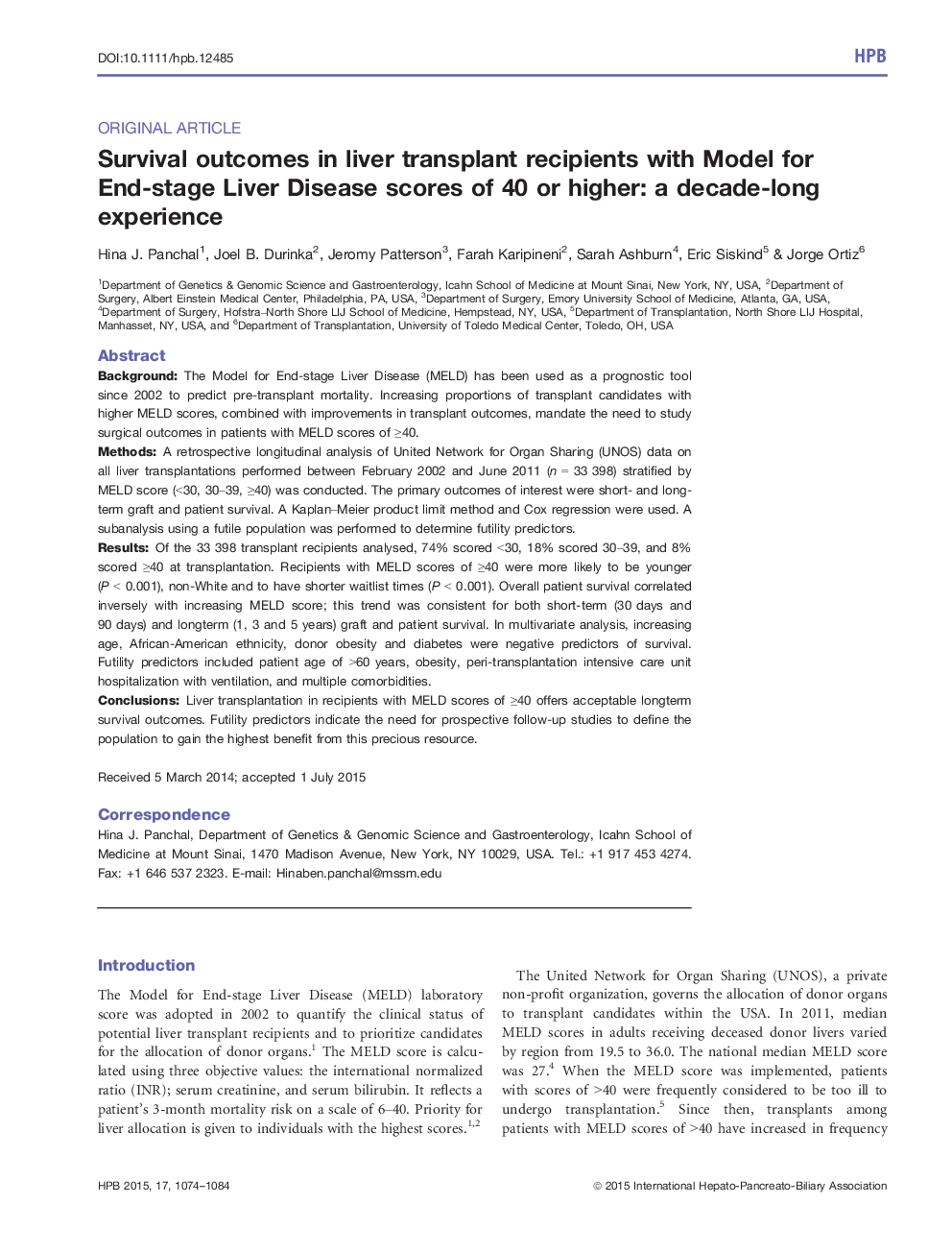| کد مقاله | کد نشریه | سال انتشار | مقاله انگلیسی | نسخه تمام متن |
|---|---|---|---|---|
| 3268564 | 1208093 | 2015 | 11 صفحه PDF | دانلود رایگان |

BackgroundThe Model for End‐stage Liver Disease (MELD) has been used as a prognostic tool since 2002 to predict pre‐transplant mortality. Increasing proportions of transplant candidates with higher MELD scores, combined with improvements in transplant outcomes, mandate the need to study surgical outcomes in patients with MELD scores of ≥40.MethodsA retrospective longitudinal analysis of United Network for Organ Sharing (UNOS) data on all liver transplantations performed between February 2002 and June 2011 (n= 33 398) stratified by MELD score (<30, 30–39, ≥40) was conducted. The primary outcomes of interest were short‐ and longterm graft and patient survival. A Kaplan–Meier product limit method and Cox regression were used. A subanalysis using a futile population was performed to determine futility predictors.ResultsOf the 33 398 transplant recipients analysed, 74% scored <30, 18% scored 30–39, and 8% scored ≥40 at transplantation. Recipients with MELD scores of ≥40 were more likely to be younger (P < 0.001), non‐White and to have shorter waitlist times (P< 0.001). Overall patient survival correlated inversely with increasing MELD score; this trend was consistent for both short‐term (30 days and 90 days) and longterm (1, 3 and 5 years) graft and patient survival. In multivariate analysis, increasing age, African‐American ethnicity, donor obesity and diabetes were negative predictors of survival. Futility predictors included patient age of >60 years, obesity, peri‐transplantation intensive care unit hospitalization with ventilation, and multiple comorbidities.ConclusionsLiver transplantation in recipients with MELD scores of ≥40 offers acceptable longterm survival outcomes. Futility predictors indicate the need for prospective follow‐up studies to define the population to gain the highest benefit from this precious resource.
Journal: HPB - Volume 17, Issue 12, December 2015, Pages 1074–1084